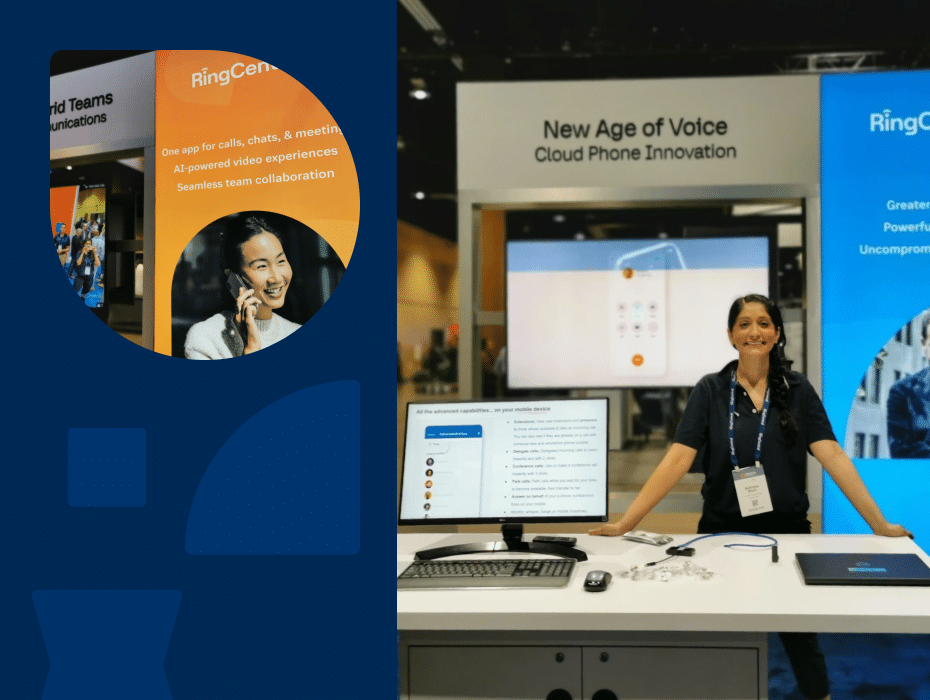Over the last few years, workplaces have evolved at a head-spinning pace. At the same time, our communications tools have adapted at breakneck speeds. The question is, what’s next?
At Enterprise Connect 2022, I had an amazing opportunity to learn about what’s happening in the communications world. And I wanted to share my thoughts about where workplace communications are headed next.
If there’s one major shift that will continue to improve how people work, it’s the future innovations in voice technology.
It’s the New Age of Voice. Here are our predictions:
The current state of voice communications
Our voices are one of the simplest and most natural forms of communication, and it’s only getting more ingrained in our everyday tools.
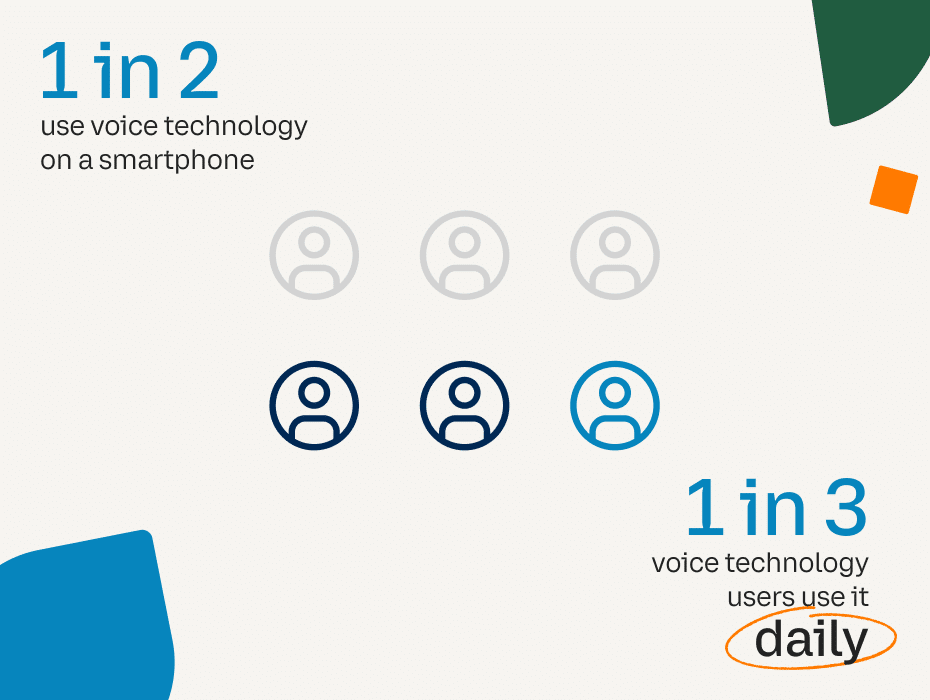
In 2020, Verizon handled an average of 800 million phone calls per day—more than double the number that was once made on the historically busiest phone day of the year: Mother’s Day. AT&T said call volume was up 35% in 2020 too, while the number of WiFi/VoIP calls doubled. In comparison, internet traffic was up just 20-25% over the same time period.
Roughly nine in 10 consumers say they do voice searches or ask a voice assistant a question on a daily or monthly basis. And while text-based chat support might be convenient, 40% of consumers say being able to speak to a human is one of the keys to great customer service.
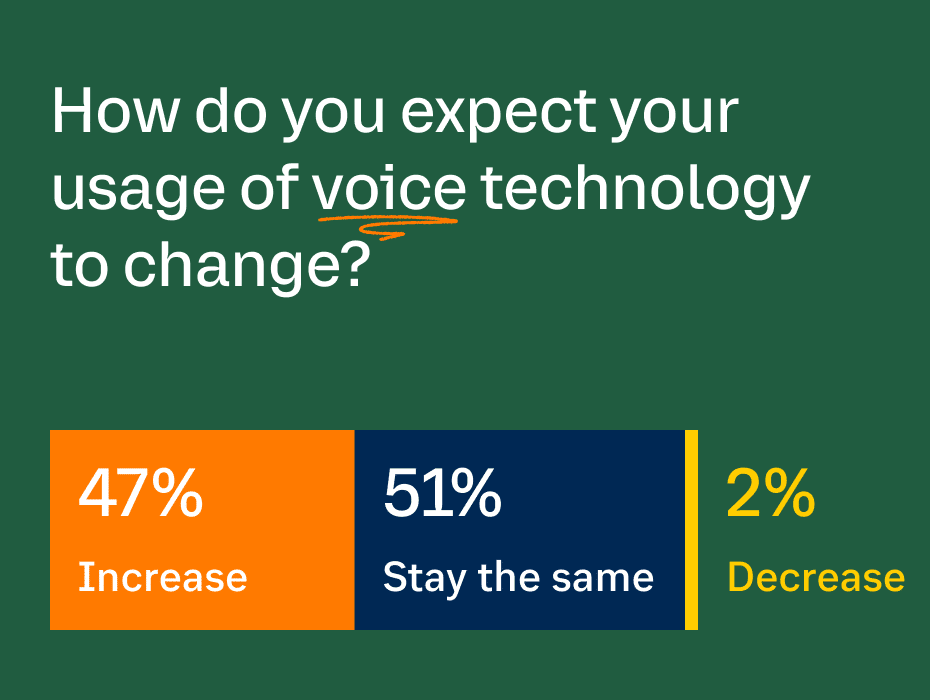
At the same time, this future of voice study revealed that 98% of respondents expect their reliance on voice technology to either increase or stay the same in the coming years. This isn’t surprising when you think of the popularity of voice assistants (think Alexa), whose global market size is expected to reach $15.6 billion USD by 2025.
So where are voice communications headed? And what are the key investments for your business?
What is the new age of voice?
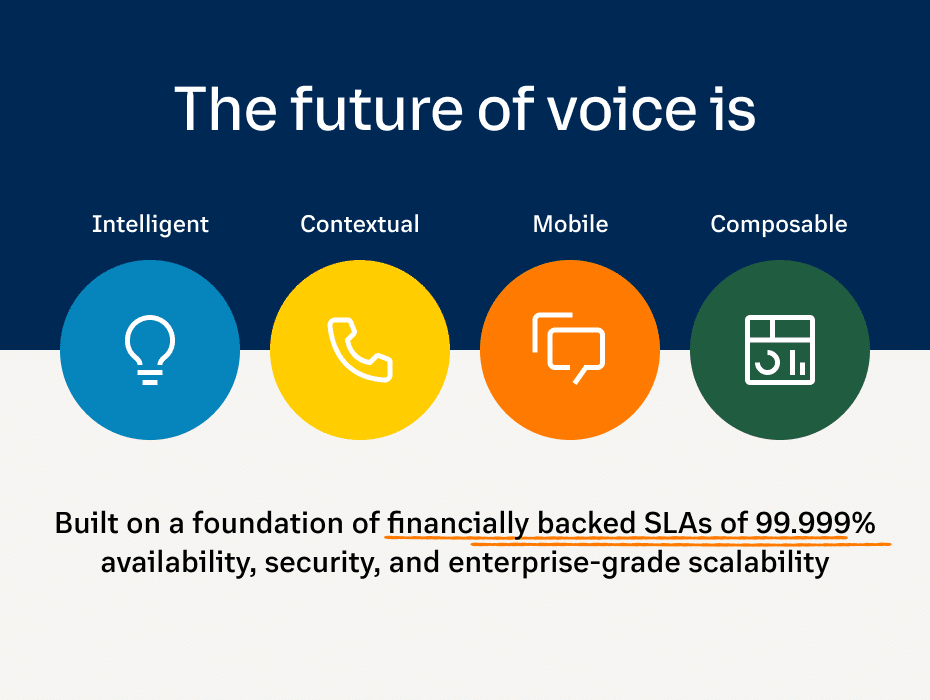
The new age of voice is about so much more than just dialing a phone to reach another human. It’s about building the mobile experience first, leveraging the cloud to make businesses more scalable and flexible, composing advanced voice into all workflows, and delivering the world’s most reliable, secure & advanced cloud PBX to all corners of the globe.
And it can be broken down into four categories:
1. Intelligent voice
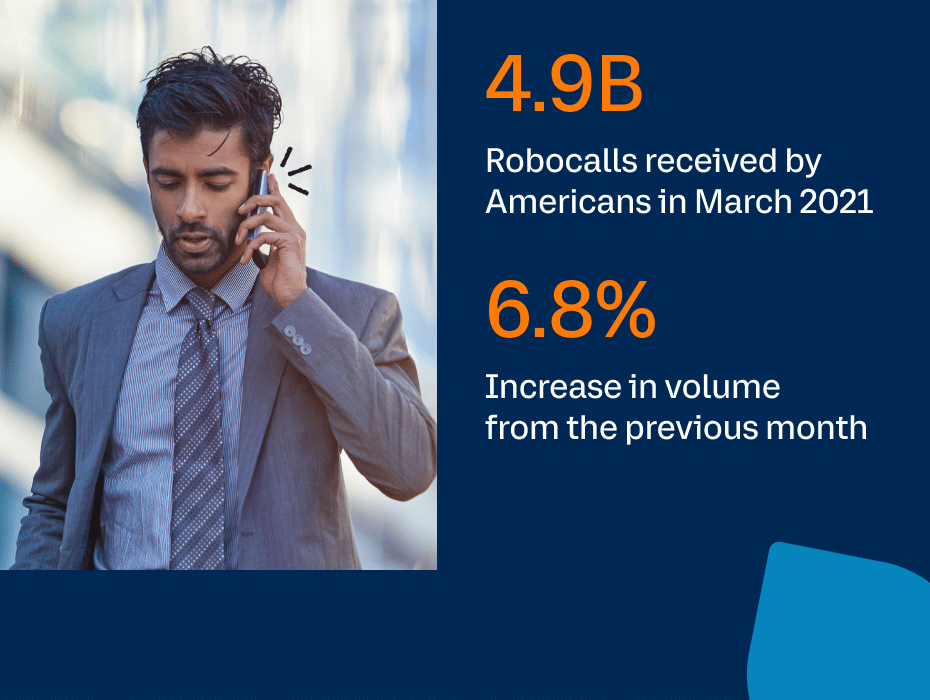
Intelligent voice uses AI capabilities to improve call experiences and to more efficiently extract value from voice calls.
Robocall mitigation and spam blocking
Using predictive AI, industry tracebacks, and the STIR/ SHAKEN framework, we stop fraudulent robocalls and fraudulent spam attacks before they ever reach users.
Voice analytics
We make analytics a priority for both our IT and business users because we know how valuable they are in ensuring a quality experience making critical business decisions.
Each of RingCentral analytics solutions is purpose-built for a specific type of user and their functional responsibility in the organization. We group them into 2 categories: IT Admins and Line of Business managers.
Voice biometrics
We imagine a future where all users will be able to authenticate themselves in their apps via voice or our apps can distinguish between speakers in a conversation automatically.
Speech recognition
Using AI and APIs to embed natural language processing (NLP), and real-time speech recognition to analyze calls, visual voicemail, and digital conversations. Taking telephone calls, email, IM, and other unstructured data and making them smart searchable.
AI-powered live transcriptions
A live transcript presents a full scope of any conversation in real-time. This allows sales assistants and customer support agents to scan over the conversation while still on the phone.
2. Contextual voice

Contextual voice enriches conversations (and drives better business outcomes) with cues and insights based on the content of that conversation.
Conversational AI
If you’ve ever interacted with an automated support bot, there’s a good chance you had a negative experience or two that left a bad taste in your mouth.
But conversational AI, which includes technologies such as AI-powered chatbots and virtual agents, uses large volumes of data, machine learning, and natural language processing to make such interactions feel more human.
We imagine a future where conversational AI will be ubiquitous in all business workflows—internal and external.
Sentiment analysis
Sentiment analysis is used to provide businesses with the data they need to enhance the customer experience.
By using automatic speech recognition as a key tool in any analytics solution, voice data can be analyzed to reveal which responses evoke positive emotions based on the tone, pitch, and frequency of the customer or employee’s voice.
3. Mobile voice

Mobility meets the functional and accessibility needs of employees who are increasingly working from anywhere—and need tools that do the same.
Mobile phones as native business endpoints
Workers can turn their smartphones into business-class phone systems complete with integrated native dialing (no app needed), call queues, instant recording, and other advanced features.
Voice assistants in the workplace
Provide the convenience and ease of use that we’re used to in our personal lives via assistants like Siri and Alexa.
Advanced PBX capabilities on mobile phones
RingCentral is the first-to-market with mobile and desktop HUD functionality, making advanced phone capabilities for users such as receptionists and admins more mobile than ever before.
Typically only available on proprietary desk phones or desktops, customers can now easily view colleagues’ real-time availability and manage multiple incoming calls with the capability to answer and transfer an incoming call, add users to a current call, chat with a colleague directly, or pick up a call on behalf of colleagues—all from both desktop or mobile devices.
4. Composable voice

Composable voice refers to embedding voice, SMS, and fax into all your critical workflows, allowing organizations to amplify the apps their business relies on to delight both employees and customers.
This helps users get more out of the voice technologies that they use and reduces silos and friction.
- Build custom workflows and applications with our open APIs, SDKs, and widgets.
- RingCentral’s MSFT Teams integration creates deeper, embedded controls & call settings between the RingCentral and Microsoft Teams apps.
- With over 300 pre-built integrations, our open platform enhances your workflows by integrating your business phone into your business apps. Dial customers using RingCentral without leaving your CRM, join video meetings from your calendar, and text employees from your browser.
A leader in voice technologies
We’re a proud leader in voice technologies, having built the foundation of our RingCentral MVP on our phone capabilities. In partnering with strategic players like carriers, systems integrators, and traditional UC brands, we’ve architected the enterprise journey to the cloud while expanding capabilities in 5G, network, and security.
We are actively invested in unlocking the new age of voice right now in our engineering sandbox. Check out our latest innovations below and see how we’re leading the journey.
Originally published Apr 04, 2022, updated Nov 03, 2023
